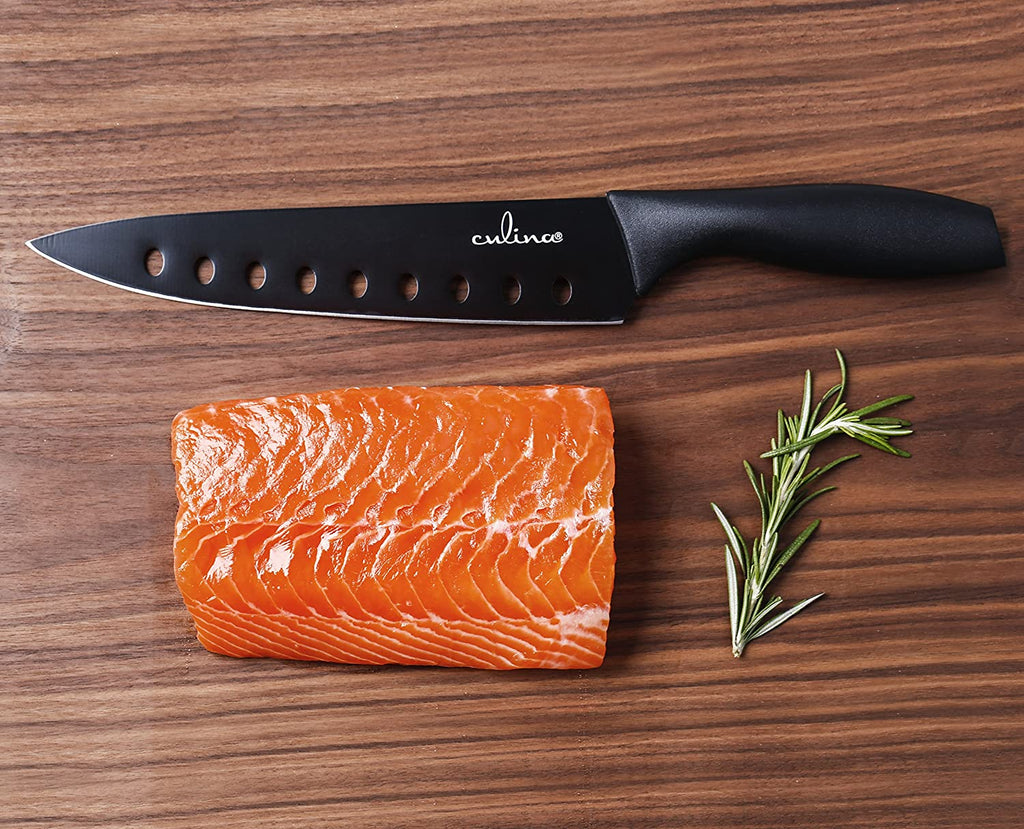Mastering the Art of Cutting with a Santoku Knife
Written By James Morgan
The Santoku knife is a versatile kitchen tool, perfect for barbecue enthusiasts looking to refine their preparation skills. The beauty of the Santoku knife lies in its design and its unique ability to handle a variety of ingredients efficiently. In this article, we'll delve into the nitty-gritty of how to cut with a Santoku knife. Before we start slicing and dicing, let's explore what makes a Santoku knife stand out.

What Is A Santoku Knife?
The term 'Santoku' translates from Japanese to 'three virtues' or 'three uses', typically referring to its exceptional capability to handle meat, fish, and vegetables. The Santoku knife features a shorter, wider blade with a flat edge and a rounded tip, making it different from traditional Western chef knives.

Why Barbecue Enthusiasts Should Use A Santoku Knife
For barbecue lovers, precision is key. The Santoku knife's design allows for thin, even slices, ensuring your ingredients cook evenly on the grill. Whether you're slicing succulent cuts of meat or finely dicing vegetables for your BBQ sides, the Santoku knife makes the task easier and more enjoyable.
Essential Knife Techniques
How to cut with a Santoku knife requires mastering a few crucial techniques. Let's break them down:
The Rocking Motion
Unlike Western chef knives, the Santoku knife is designed for a straight-down chopping motion rather than rocking. This means youll lift the blade slightly off the board and chop directly through the ingredients.
The Push Cut
One of the most effective cuts with a Santoku knife is the push cut. This technique involves pushing the knife forward and down in a single motion. It's perfect for slicing vegetables and boneless meats.
The Pull Cut
When dealing with delicate ingredients like herbs or thinly sliced onions, the pull cut is your go-to. Pull the knife back towards you, letting the sharp edge do the work.

Step-by-Step Guide to Using a Santoku Knife
Step 1: Proper Grip
Hold the knife handle with a firm grip, ensuring your thumb and forefinger pinch the blade's base for better control and stability.
Step 2: Preparation
Ensure your cutting board is stable and positioned comfortably. Prepare all ingredients in advance to maintain a smooth workflow.
Step 3: Basic Cuts
- Dice: Perfect for creating small, uniform cubes of vegetables.
- Julienne: Ideal for creating thin, matchstick-sized pieces, great for garnishes or stir-fries.
- Slice: The most common cut, suitable for meat, vegetables, and even fruits.

Safety Tips for Using A Santoku Knife
While improving your cutting skills, always prioritize safety:
- Keep your knife sharp a sharp blade is safer than a dull one.
- Use a cutting board with a non-slip base.
- Always cut away from your body and keep your fingers tucked in.
Maintaining Your Santoku Knife
To preserve the blade's sharpness and longevity:
- Hand wash with warm, soapy water and dry immediately.
- Avoid cutting through bones or hard substances.
- Store your knife in a knife block or magnetic strip to prevent damage.
Advanced Cutting Techniques
Once you're comfortable with basic cuts, try these advanced techniques:
Chiffonade
This technique involves stacking leaves, rolling them tightly, and slicing them into thin ribbons. It's excellent for herbs and leafy greens.
Brunoise
A Brunoise cut creates tiny, uniform cubes, typically used for garnishes or fine vegetable bases.
Conclusion
Mastering how to cut with a Santoku knife can revolutionize your barbecue preparation, making it more efficient and enjoyable. This versatile tool is a must-have for any barbecue enthusiast looking to elevate their cooking skills. Now, grab your Santoku knife and start slicing your way to that perfect barbecue experience!
FAQs
What should I avoid cutting with a Santoku knife?
Avoid cutting bones or frozen foods with a Santoku knife, as they can damage the blade.
How often should I sharpen my Santoku knife?
It depends on usage. For regular use, sharpening every 3-6 months is recommended.
Can I use a Santoku knife for all my cutting needs?
While a Santoku knife is very versatile, it's recommended to use specialized knives for tasks like bread slicing or butchering.
As an Amazon Associate, I earn from qualifying purchases.



